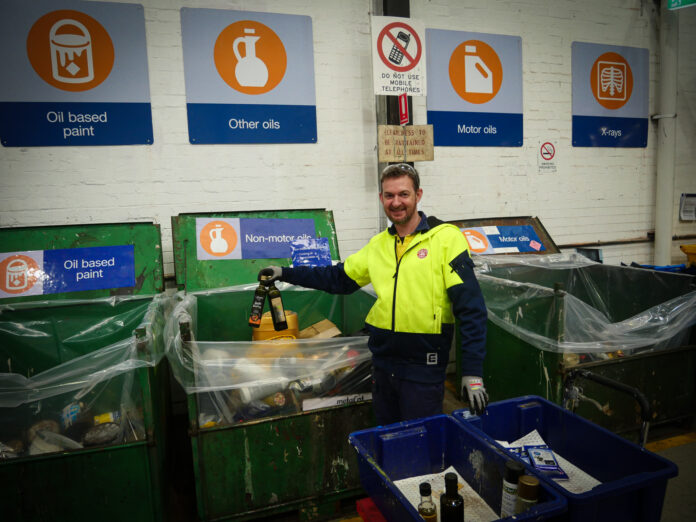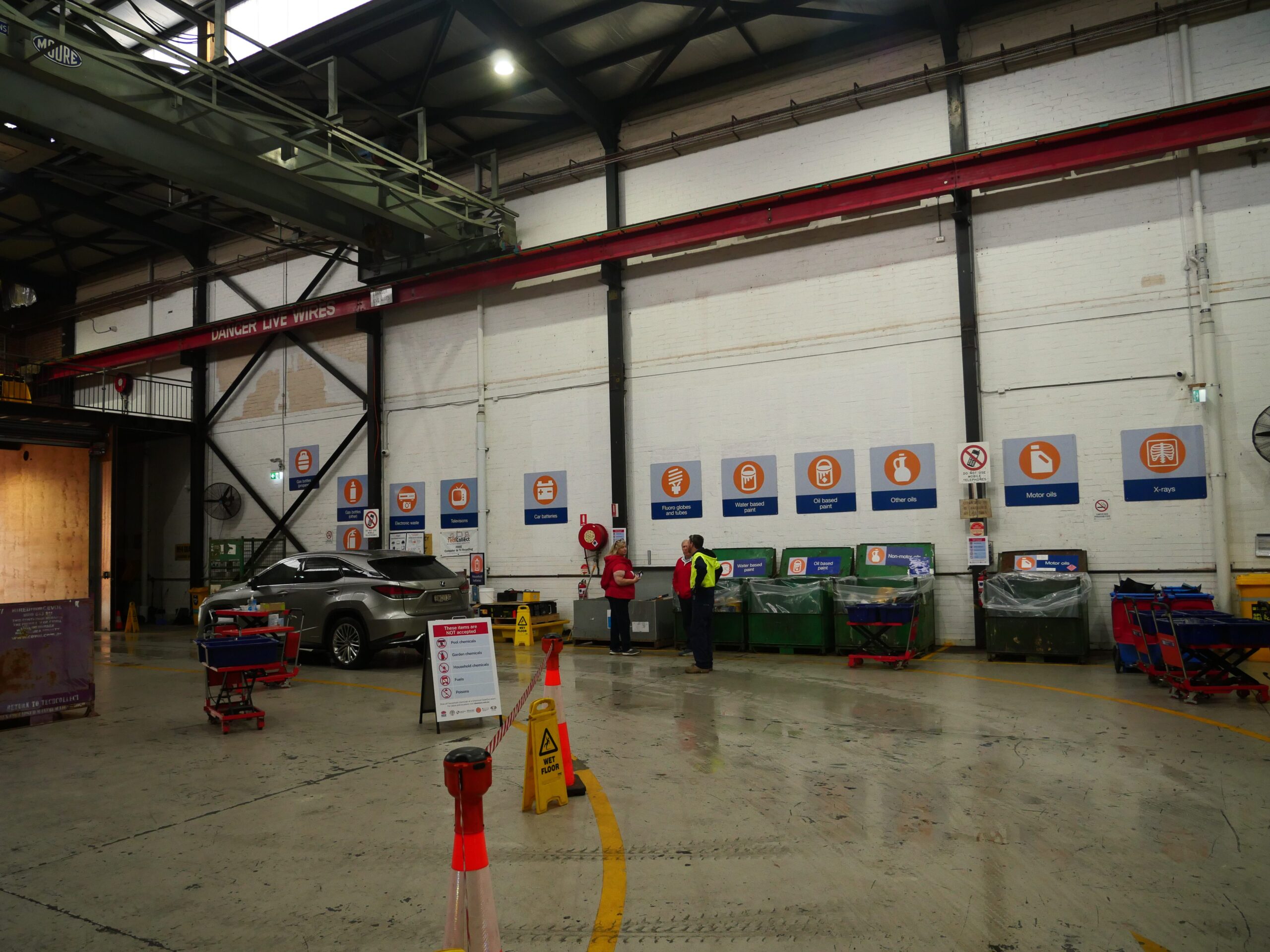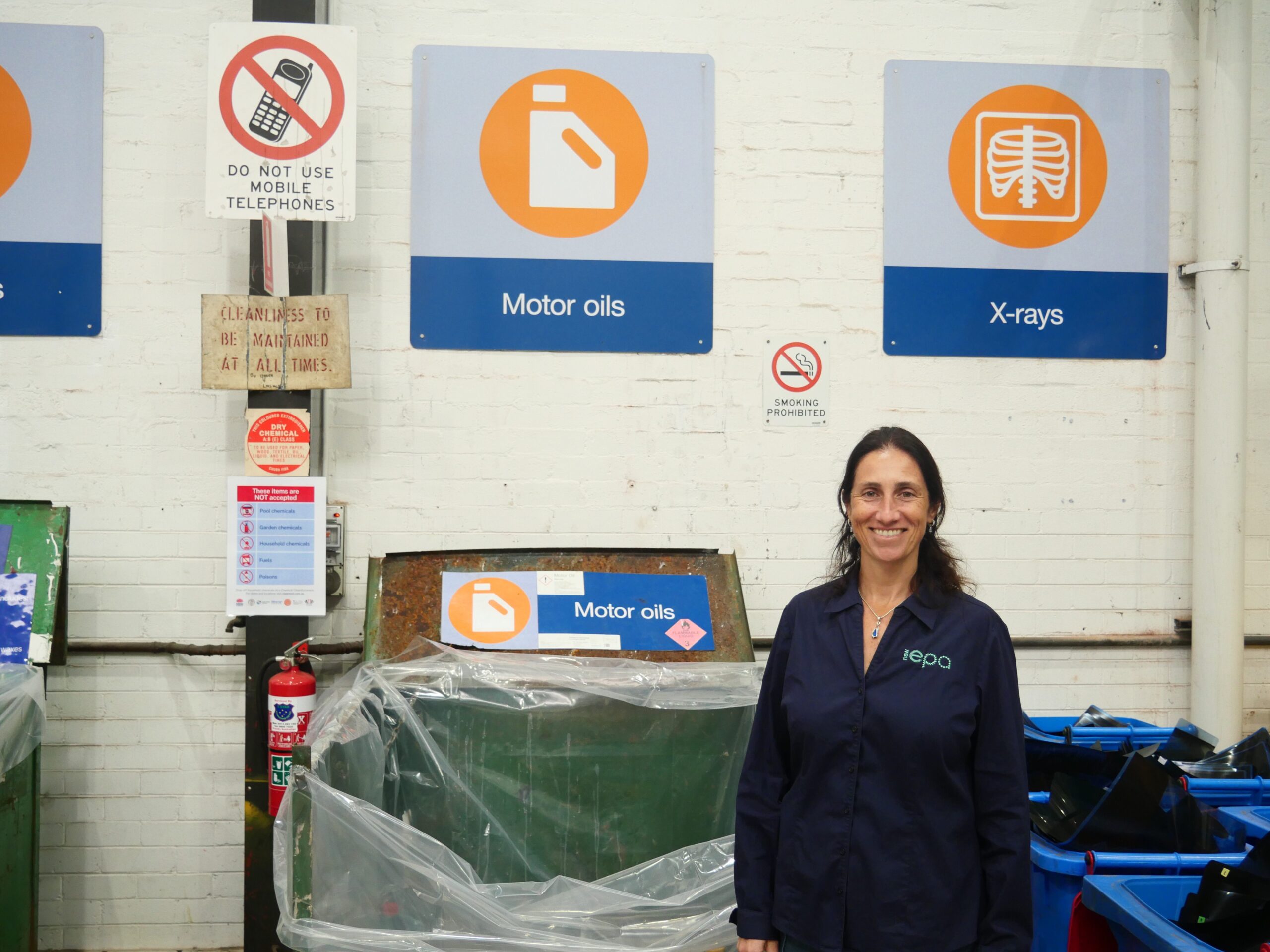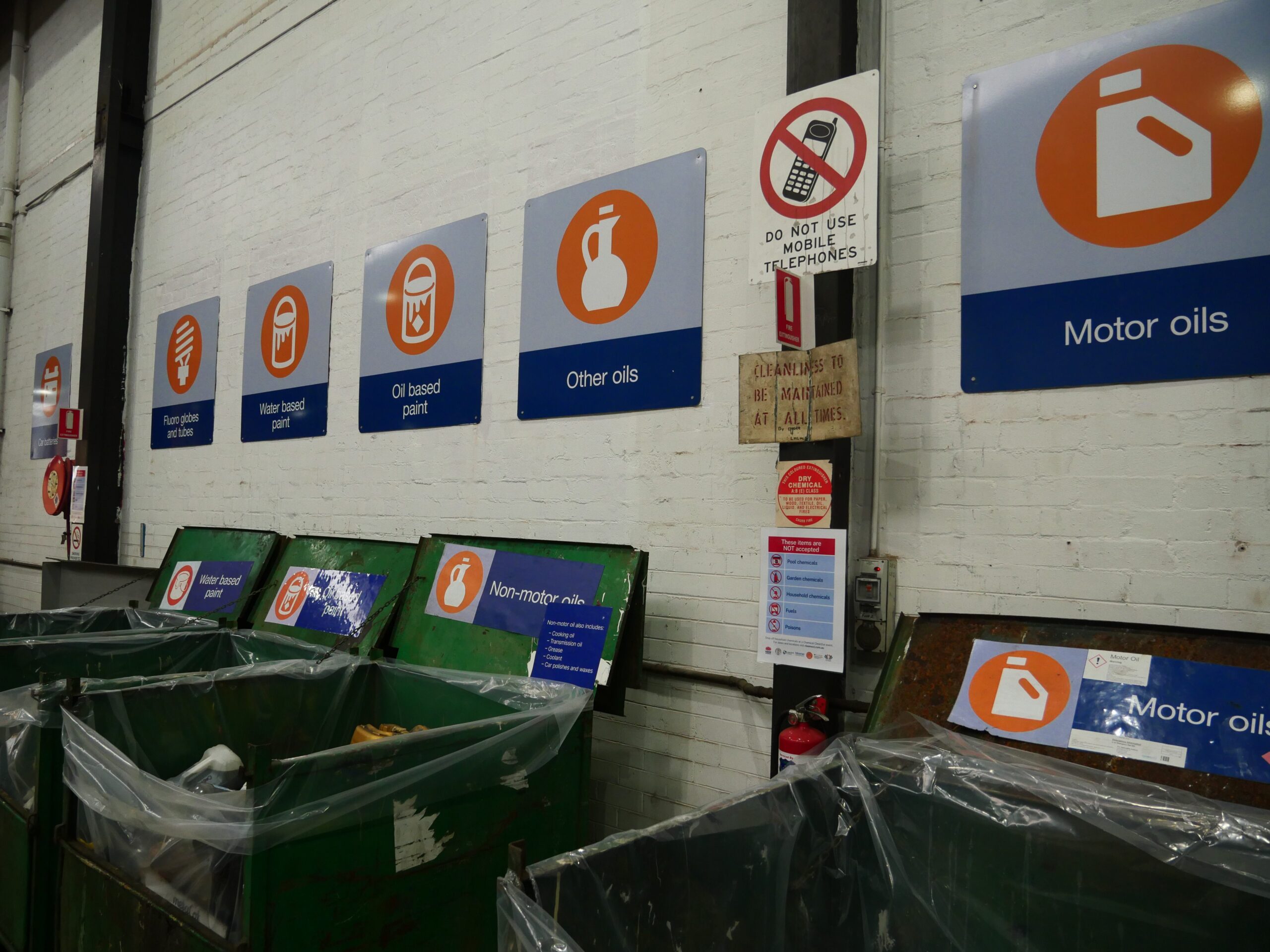
It’s that time of the year again, National Recycling Week 2025, and no matter how you choose to celebrate, it would be remiss not to mention the Artarmon Community Recycling Centre.
It’s easy to let things pile up in the house or garage when they aren’t accepted in the average kerbside bin or collected by a recycling collection service. Household wastes such as paint cans, gas bottles, oils, household batteries and even X-ray films are great at collecting dust, but with a local Community Recycling Centre (CRC), disposing of and repurposing these items is easier than ever – and it’s for free.
“Together, the NSW Government and councils across the state have built a network of over 100 community recycling centres. This one here in North Sydney is really popular and the team here are excellent. They will help you out when you bring those materials in, to sort them into the right place,” NSW EPA Director of Circular Economy Programs, Kathy Giunta told us.
Dropping off items is a simple process, as ITC discovered on its exclusive tour of the facility. To test the service’s efficiency, we gathered used paint cans, various expired oils, an old electric heater, and empty ink cartridges for disposal.
Upon arrival, a staff member greeted our vehicle, guided us into the building, assisted with unloading the items, and pointed out where they should be placed.

But as helpful as the staff are, everyone should come prepared and know the facility’s recycling rules, so you’re not hauling back an unwanted load. Household waste is limited to 20 litres or 20 kilograms per customer per drop off, and while your average CRC can dispose of a lot of things, it can’t take in everything.
“What we don’t want people to bring to the Community Recycling Centres are toxic materials, like pool chemicals, hobby chemicals and so on. Those items can go to your next household chemical clean-out event. Look at your council website to find out when the next event is on that you can take those materials to,” Ms Giunta said.

You can also find your closest event by visiting the ChemicalCleanOut website.
What Can Be Brought To The CRC Facility?
In plain English, here is everything you’re able to take into a Community Recycling Centre.
- Paint (oil and water-based)
- Gas bottles
- Fire extinguishers
- Fluorescent light globes and tubes
- Electronic Waste (eg. computers, TVs, DVD players, CD players, electrical equipment and small electrical appliances).
- DVD’s and CD’s. Please remove plastic covers on CD’s/DVD’s and any plastic or cardboard packaging.
- Household batteries
- Lead Acid Batteries (eg. car & motorbike batteries)
- Motor and other oils (including cooking oil)
- Smoke detectors
- Mobile phones
- X-ray films
- White goods are not accepted

There are over 100 CRC facilities around NSW; however, the closest one to Lane Cove is at 8 Waltham Street, Artarmon. See map below.
Opening times for the North Sydney facility are the following:
| Tuesday | Closed |
| Wednesday | 8 am–2 pm |
| Thursday | 8 am–2 pm |
| Friday | 8 am–2 pm |
| Saturday | 8 am–4 pm |
| Sunday | 8 am–4 pm |
| Monday | Closed |
What Happens To My Items Once They Are Recycled?
It’s a good question. Items brought into a CRC can be deconstructed, their various materials repurposed, checked, and reintroduced into an industry, or recycled into something new altogether.
One of the most common materials brought into the North Sydney CRC is paint, and its repurpose depends on its type.
“So around 60% of what we collect through the service is waste paint, either oil-based or water-based,” Ms Giunta said “The water-based paint is taken and recycled. The oil-based paint is sometimes used for energy production and sometimes recycled.”
Here’s a more detailed list of what is done with your items instead of going into the landfill:
- Paints are mixed with other waste solvents and used as an alternative to fuel in cement kilns. The metal containers are recycled.
- Lead acid batteries are sent to recyclers where the lead, acid and plastic are recovered and recycled.
- Fluorescent tubes and globes contain mercury. Recyclers crush the tubes to separate the phosphor powder from the glass. They feed the powder through receiving containers, where it is filtered to capture fugitive mercury emissions. The mercury is then separated by distillation and sold for a range of industrial uses. The metals are also recycled.
- Gas bottles have residual gas captured for reuse. Undamaged bottles are retested, restamped and entered into the hire industry. Damaged bottles are punctured and recycled as scrap metal.
- Used oils are processed to become a lubricant or used for energy production.

Lane Cove Residents Love Recycling
From Lane Cove’s Return and Earn facility, to the Council-funded doorstep recycling service HomeCycle, the Lane Cove community are set on working towards a greener area – perhaps one of the reasons why the North Sydney Recycling Centre recycles around 520,000 kg of material every year.
It’s estimated Sydney’s landfill space will run out by 2023, according to NSW EPA, this could be avoided if urgent action is taken. CRCs are a great way the community can prevent their items from being sent to these forever pits, and instead, be repurposed for something new.
“The community has really gotten on board and brought a whole lot of problematic materials here. The program has saved across the state the equivalent of 100,000 wheelie bins worth of material that has been diverted from landfill and sent for recycling,” Ms Giunta said.
If you’d like to see other ways you positively contribute to this year’s Recycling Week, check out our Lane Cove A to Z Recycle list here. The other recycling programmes that are working well in Lane Cove are Return and Earn and Soft Plastic Recycling.

If You Buy Us A Coffee, it is, in fact, helping to pay the ITC Team
We want to clarify that, yes, the ITC team does support local businesses by drinking coffee, but there is a limit to the number of cups you can drink in a day.
We started the Buy Us A Coffee Campaign as a way to keep local news free and to grow our team. Our team is now comprised of three local mums who work part-time to bring you all the up-to-date news, traffic alerts, incidents, and events. We also now have Walkley Award Nominee Jack Kelly writing articles for us, as well as founder Jacky Barker. We truly appreciate any help you can provide, whether large or small.
How local journalism keeps communities engaged
Local newsrooms play a vital role in keeping communities informed and engaged with the decisions that affect them. Without dedicated coverage of local government, infrastructure, and policy changes, many residents are left uninformed about issues that significantly impact their daily lives. Independent newsrooms help bridge this gap, providing a trusted source of information and giving people a platform to voice concerns. Strong local reporting doesn’t just inform, it fosters public participation and strengthens civic engagement. – extract from the Local and Independent News Association Website












